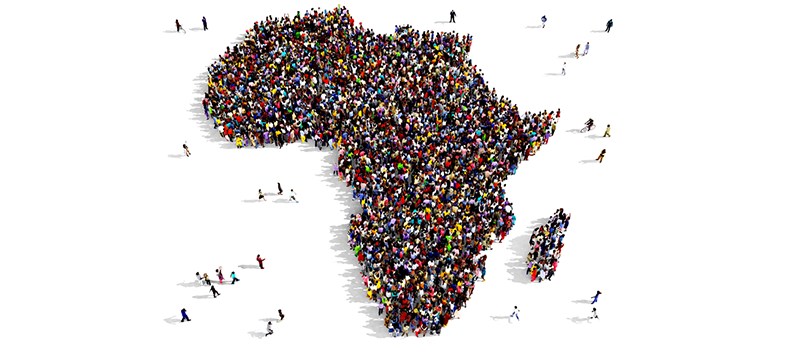4.3 Implementing policies to enhance migration’s positive impacts
In the last section, you focused on migration governance and policymaking; here, you will look at how migration policy is implemented. Policies are complex entities and reflect many competing pressures in a political system, but also in a wider society. For international migration, these pressures are even more complicated because migrants cross borders, which means they may be subject to policies of multiple nation states. Moreover, in many countries we see ‘good’ policies and laws, but their implementation and enforcement are weak.
We begin this section looking at general models of policy implementation before turning to the more specific case of migration policy and why it can fail. Finally, we hear from our MIAG experts again about the implementation of migration policies in the four African countries that are our focus.
Activity 4.3: Implementing migration policy
Step 1
Read an extract from a free course [Tip: hold Ctrl and click a link to open it in a new tab. (Hide tip)] from the OU called The public policy–action relationship (OpenLearn, 2016) and make brief notes on the four models of implementation: mechanical, organic, cultural and political.
| Mechanical | Organic | Cultural | Political |
Discussion
Your response may be similar to the notes below:
| Mechanical | Organic | Cultural | Political |
See the policy process as a sort of machine where ‘levers’ can be pulled to achieve goals Relationships between parts of government seen as fixed and predictable It is hierarchical in that only top officials can learn, whereas all other actors simply respond to directives |
Policy system is made up of interacting elements in an adaptive system Feedback loops mean that implementation is not the endpoint of the policy process but part of the whole system Policies are also not unambiguous and so objectives may clash |
Human beings understand and interpret the world in different ways These cultural constructions are not haphazard and individualised, since they draw on repertoires of meaning This focus on culture moves the focus of policy beyond the obvious organs of government |
The policy is made up of many actors with differing interests and amounts of power Power can play out in different ways, with some being about officials using discretion through to forms of resistance to policies |
Step 2
Now we draw on an extract from a paper on migration policy (Castles, 2004). It is quite academic, with technical language and with many references to cited works. Don’t let this put you off! Castles’ stated aim is to look at migration policy failure, arguing that such failure can happen in any country – although his focus is mainly on migration from what he calls ‘less-developed countries to industrialised countries’.
In his view, the failure is due to a combination of:
- misunderstanding the complex social nature of migration (things like migration networks)
- globalisation – international migration inevitably involves more than one state, which makes coherent policy across states difficult
- more political factors, relating to the policy process in different ways.
The extract relates to this final set of factors, because these relate to the policymaking process that you have just studied. Now read the extract and, using your notes from Step 1, analyse what Castles is saying about migration policy.
| Mechanical | Organic | Cultural | Political |
You haven’t entered anything for this space. Use the ‘Original location’ link if you’d like to enter something now. |
You haven’t entered anything for this space. Use the ‘Original location’ link if you’d like to enter something now. |
You haven’t entered anything for this space. Use the ‘Original location’ link if you’d like to enter something now. |
You haven’t entered anything for this space. Use the ‘Original location’ link if you’d like to enter something now. |
Discussion
You may have made some of the notes captured below:
| Mechanical | Organic | Cultural | Political |
Encouraged labour migration Manage flows, control measures Stable/able |
Political systems are complex and contradictory |
Idea that the inability to provide Hidden agendas, political cultures Ethnocentric ideologies, public opinion, rhetoric, heated polemics Social structure of policymaking |
Competing interests Political mobilisation, failure of the state Structural dependence, lobbying, interest groups Clientelist politics, powerful organised interests Rights Civil society, campaign, resistant |
Much of what Castles discusses seems to fall into ‘cultural’ and ‘political’ categories, but there is evidence of other theories or explanations. As a general observation, he seems to see the policy process as organic, and made up of many complex systems and sub-systems. His style of analysis is such that he sometimes suggests what the mechanical view is – for example, ‘managing’ migration in an orderly way – but then shows that cultural and political explanations mean that these rational intentions get undermined.
The cultural explanations for migration policy failure, in Castles’ view, is a whole set of rhetorical strategies whereby opinions are shaped by the media and tensions are stoked. These cultural ‘repertoires’ (to use the language of The public policy–action relationship extract) are related to the political causes: according to Castles, powerful interests can disrupt policymaking and implementation. One of the strategies for making these claims is through using ideologies, ideas and polemics. But some (often less powerful) forces within civil society can mobilise to resist the more powerful interests and actors.
Castles’ paper emphasises that situations are rarely straightforward or are susceptible to ‘either/or’ solutions. Any given situation will contain one or more elements of these theoretical models of policymaking and implementation; each element may highlight or obscure some features and illustrate why some things work and others do not. This policy analysis can help actors to intervene in new ways that they hope will make the differences that they see as desirable. We now turn to such policy possibilities.
4.2 How are migration policies made?
